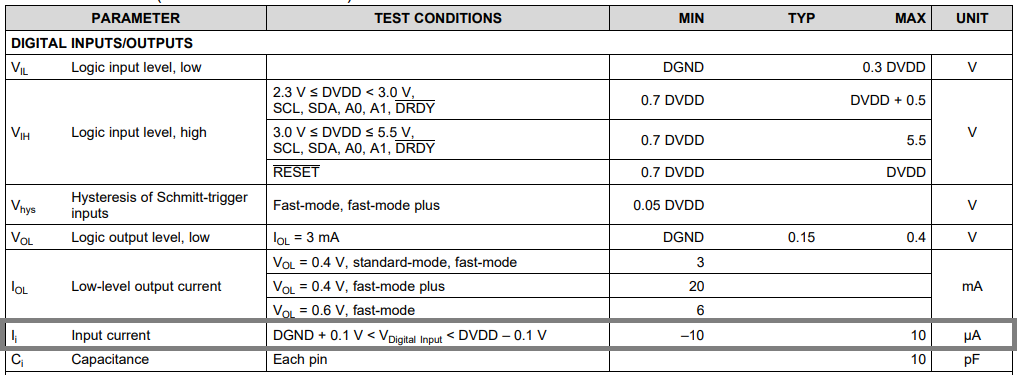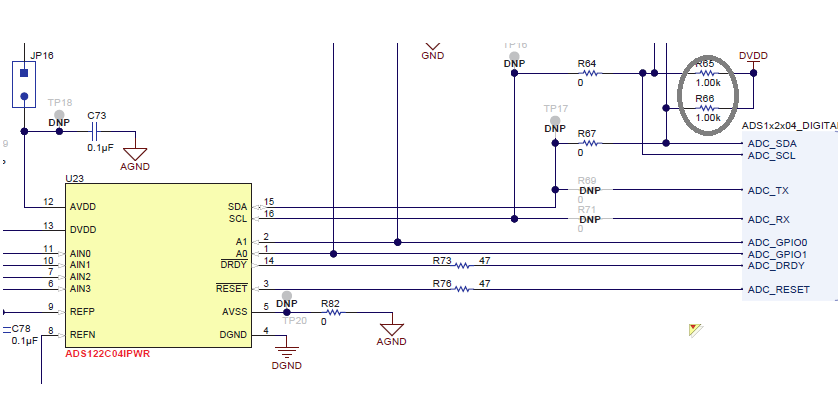Dear, Sir.
My customer is considering to apply ADS122C04 for their system.
I would like to make sure several things as below, it is related to the digital
input/output input current. Please give your advice.
1. I think the pull-up resistor will be to limit the current at outout=Low(internal transistor ON).
What is the meaning of "Input Current", -10uA/10uA?
I wonder it is a leakage current at output=High(internal transistor OFF?
2. If above was YES, higher pull-up resistor value would be caused for too much voltage drop
on output HIGH level, so smaller value would be better. But the DVDD current consumption
would become higher. I wonder my understanding is correct?
3. The spec is defined under -40 to 125 deg.C.
The custoner's system ambient temperature is just -20 to 50 deg.C.
Is it possible to optimize the input current spec for finding the best pull-up resistor value to realize
above #2?
Best Regards,
H. Sakai



